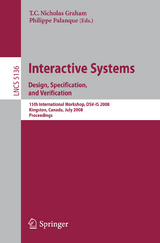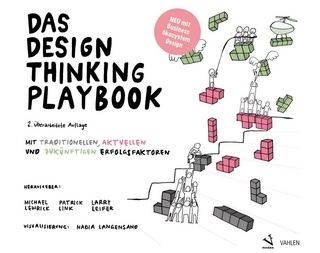Interactive Systems. Design, Specification, and Verification
Springer Berlin (Verlag)
978-3-540-70568-0 (ISBN)
EMU in the Car: Evaluating Multimodal Usability of a Satellite Navigation System.- Comparing Mixed Interactive Systems for Navigating 3D Environments in Museums.- An Attentive Groupware Device to Mitigate Information Overload.- Multi-fidelity User Interface Specifications.- HOPS: A Prototypical Specification Tool for Interactive Systems.- Systematic Analysis of Control Panel Interfaces Using Formal Tools.- Investigating System Navigation Ergonomics through Model Verification.- Tool Support for Representing Task Models, Dialog Models and User-Interface Specifications.- Towards a Library of Workflow User Interface Patterns.- Specification and Verification of Multi-agent Systems Interaction Protocols Using a Combination of AUML and Event B.- Pattern Languages as Tool for Discount Usability Engineering.- Cascading Dialog Modeling with UsiXML.- Designing Graphical Elements for Cognitively Demanding Activities: An Account on Fine-Tuning for Colors.- Lightweight Coding of Structurally Varying Dialogs.- ReWiRe: Designing Reactive Systems for Pervasive Environments.- Toward Multi-disciplinary Model-Based (Re)Design of Sustainable User Interfaces.- A Model-Based Approach to Supporting Configuration in Ubiquitous Systems.- Exploiting Web Services and Model-Based User Interfaces for Multi-device Access to Home Applications.- Resources for Situated Actions.- An Architecture and a Formal Description Technique for the Design and Implementation of Reconfigurable User Interfaces.- COMET(s), A Software Architecture Style and an Interactors Toolkit for Plastic User Interfaces.- Executable Models for Human-Computer Interaction.- A Middleware for Seamless Use of Multiple Displays.- Graphic Rendering Considered as a Compilation Chain.- Towards Specifying Multimodal Collaborative User Interfaces: A Comparison of Collaboration Notations.- Towards Characterizing Visualizations.- Towards Usability Evaluation for Smart Appliance Ensembles.- Task Model Refinement with Meta Operators.- Utilizing Dynamic Executable Models for User Interface Development.
| Erscheint lt. Verlag | 1.7.2008 |
|---|---|
| Reihe/Serie | Lecture Notes in Computer Science | Programming and Software Engineering |
| Zusatzinfo | IX, 314 p. |
| Verlagsort | Berlin |
| Sprache | englisch |
| Maße | 155 x 235 mm |
| Gewicht | 504 g |
| Themenwelt | Mathematik / Informatik ► Informatik ► Betriebssysteme / Server |
| Informatik ► Software Entwicklung ► User Interfaces (HCI) | |
| Schlagworte | 3D interactions • Adaptive Interfaces • augmented reality • Collaborative Design • critical systems • Design • design model • dynamic configuration • formal methods • Formal Specifications • GUI • haptic interaction • Hardcover, Softcover / Informatik, EDV/Betriebssysteme, Benutzeroberflächen • HCI • HC/Informatik, EDV/Betriebssysteme, Benutzeroberflächen • Human Computer Interaction • information visualizatio • Information Visualization • Intelligent interfaces • interactive software • mixed reality • mobile computing • Mobile Devices • model-based design • Modeling • multi-agent system • Multimodal Interfaces • navigation systems • Requirements Engineering • style sheets • Task Models • ubiquitous computing • UML • Usability • User-Centered Design • User Interface Design • User Interface Evaluation • User Interfaces • verification • Virtual Reality • Web Services • workflow information system |
| ISBN-10 | 3-540-70568-6 / 3540705686 |
| ISBN-13 | 978-3-540-70568-0 / 9783540705680 |
| Zustand | Neuware |
| Informationen gemäß Produktsicherheitsverordnung (GPSR) | |
| Haben Sie eine Frage zum Produkt? |
aus dem Bereich




